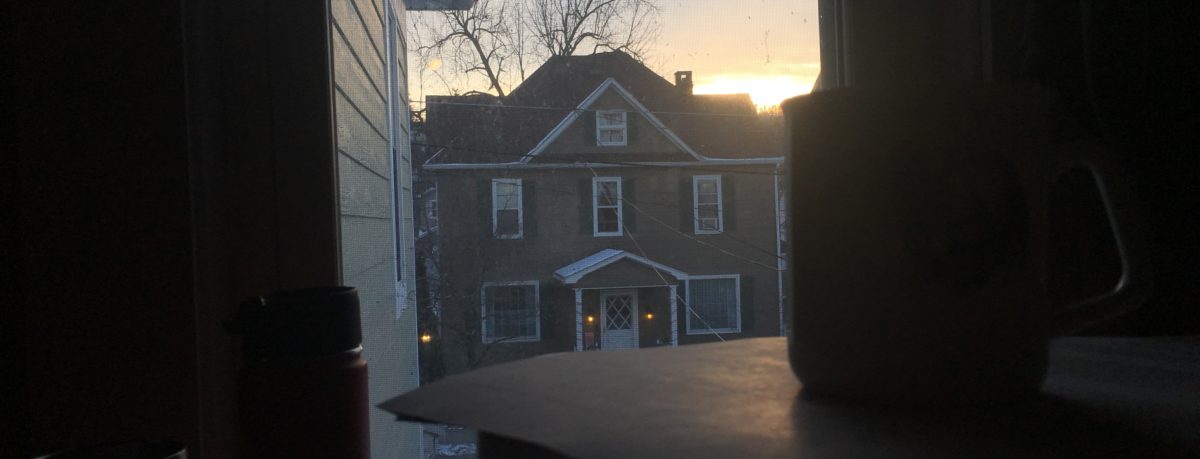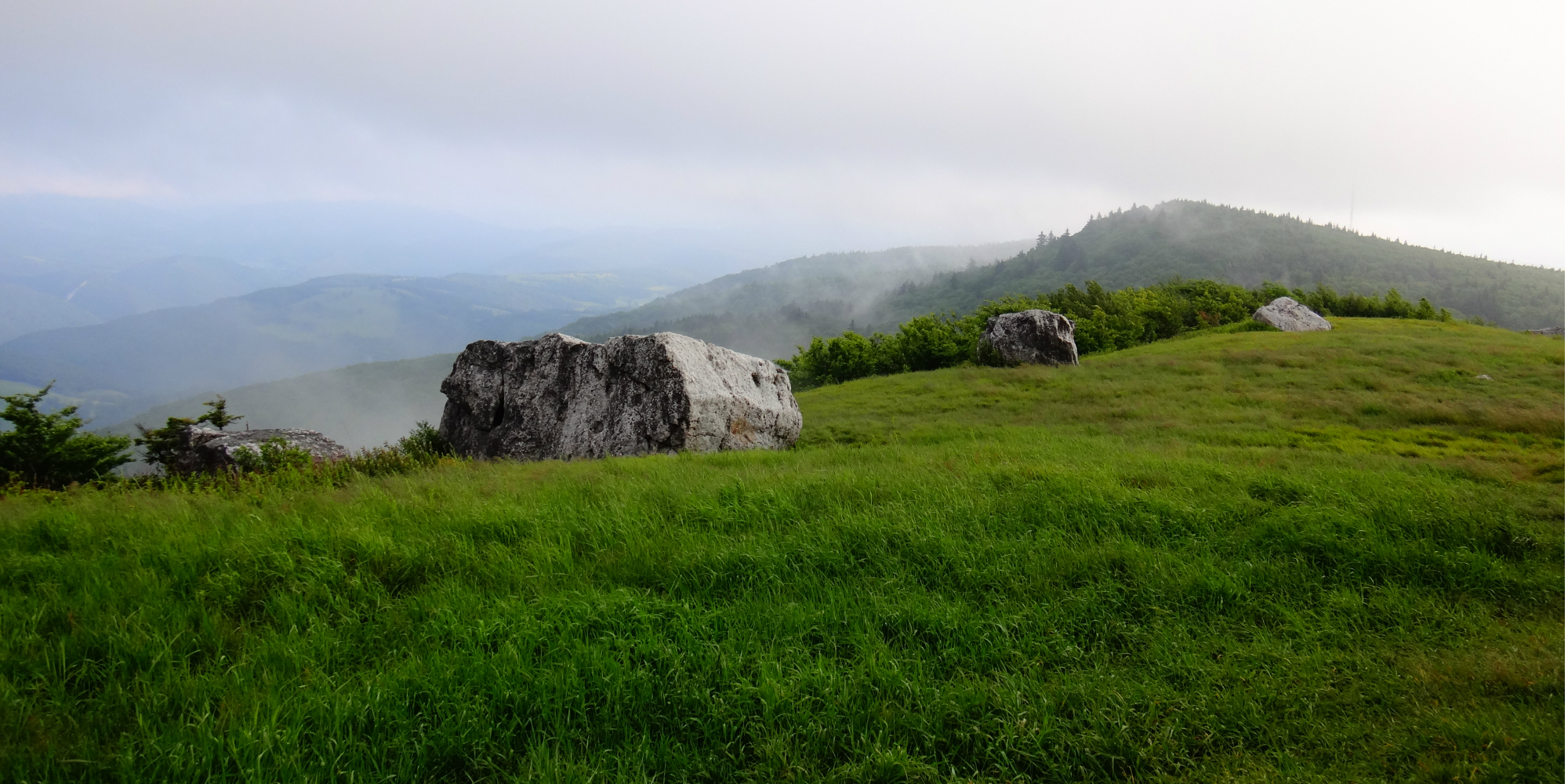I’m not claiming to have been a pioneer, by any means, but I became aware of the form early enough to be the one trying to explain it to lots of others.
“It’s basically a website,” I remember telling one of my hipper, younger professors in the hallway of the UMBC American Studies department in 2002, “but it gets updated all the time, and the most recent post is on top, and you can make these subtextual jokes by linking certain words to other pages…”
I had no idea what I was talking about, really, I just sensed some sort of unifying form under sites like Kottke.org, Talking Points Memo (back when it was just Josh Marshall in his living room), Matt Yglesias, etc., and decided to try to imitate it.
Courtesy of Internet Archive, you can see how my first blog, Talking Out of School (“A Baltimore-based weblog of education news and scuttlebutt, with an emphasis on education politics and justice, K-12, testing, and curriculum, updated regularly”), channeled that early combination of linking to real news sites’ articles interspersed with commentary that wasn’t half as pithy as I hoped.
Talking Out of School debuted in January of 2003, an auspicious year in the history of blogging. Jason Kottke had been going strong since 1998, but Heather Armstrong had only gotten fired a couple of months earlier.
As I acquaint myself with the history of that time, I’m tickled to realize that I opened my free account on the Blogger platform (home to all of those sites that are subdomains of “.blogspot.com”) a month before its acquisition by Google and a half-year before the releases of WordPress and TypePad. Not a pioneer, no, but then you couldn’t have said every inch of the information superhighway was paved yet, either.
Rewind a little further. I had operated a personal website called Margin Release since the fall of 2002. Amy designed the site for me, having learned how to use Adobe Dreamweaver in one of her classes. I guess that means it wasn’t quite hand-coded but it was obviously pre-CSS and WYSISWYG dashboards, so even minor typo corrections required their own FTP uploads over a dialup connection. (Remember this sound?)
So when I figured out that you could attach a Blogger blog to an existing domain name as if it were part of your site, I was all over it. Hence, first, Talking Out of School, and, later, a somewhat more personal/writerly blog called Behind the Mule, both subdomains of my original Margin Release website.
Then, in 2005, having fallen under the influence of Tony Pierce , The Pants, Raymi the Minx, OneLifeTakeTwo, and various sex bloggers whose names I can no longer recall, I formed the ambition to diarize and ramble and share potentially shocking personal tidbits about myself online. Why not? It seemed to be the done thing.
In this mood, I launched a new blog-focused site called Margin Notes. The earliest date Internet Archive crawled Margin Notes seems to have been June 30, 2005, which might very well have been the day of my debut post. According to my Dreamhost account records, I had bought the domain name only ten days earlier.
I took Margin Notes in various directions in the ensuing years. (Here’s a snapshot from 2008.) Fortunately for my career, family, and other innocent bystanders I never really went in the shocking tidbits/sex blogging direction (although note that nowhere in this post have I said that I’m offering a comprehensive list of every single blog I ever started, and I’ll just leave it at that).
Sometimes I tended more in the direction of essay writing and other times more in the direction of day-by-day diary. The latter format was most pronounced during 2007, when I fell under the influence of a true blogging pioneer named James Lileks.
Lileks’s Monday-Friday Bleat intrigued me partly for its subject matter—its consideration of the small moments in each day that make up a life—and partly for the low stylistic bar it set. “This isn’t writing, it’s typing,” I’m sure I remember Lileks writing typing at some point. I adopted this as my own motto as I commenced a project of exhaustive/exhausting chronicling of my own days.
The less there is going on, the more likely I am to stay faithful to a diary—that’s been a pattern throughout my life, even going back to the days when I had to make own ink from elderberry juice and scratch my words onto bound vellum with a sharpened rooster feather. So it makes sense that this particular format flourished on Margin Notes during the eight or so months after Amy moved early to Missoula to start a new job and I remained behind in Baltimore to finish out a round three years at my first real job and pack up the house. Leading a mostly interior experience during that time, I found it easy to write about what I did all day, i.e., not much.
I’d had a similar, albeit analog, experience when I was stationed in Miami in the late 1990s. I never managed to develop much of a social life in that city—no non-Coast Guard friends, no particularly strong off-duty connections with any of my shipmates—which was bad for my morale but great for my diary keeping. I would buy large hardcover sketchbooks at Barnes and Noble (I wouldn’t spot my first Moleskine in the wild until 2002, in the gift shop of the National Building Museum) and fill page after page with a fountain pen I’d bought at the old Levenger outlet near Palm Beach.
These details are important because with me it has always been difficult to separate my fetish for the tools and act of writing from the actual, you know, stringing together of words and acquiring the craft and discipline to shape them into something others might find to be worth reading. (I’ll also point out and save for later elaboration another important fact about these and almost all of the dozens if not hundreds of notebooks I’ve kept over the years: I’ve never gone back and read a word in just about any of them.)
So I really can’t say whether I grew up wanting to be a writer (in addition to a cop and a film director and maybe a film-directing cop) or just wanting to inhabit a sort of image of someone writing by hand in a beautiful old blank book, by the light of a candle or kerosene lamp. When I wrote by fountain pen in my B&N sketchbooks, I was keeping a record of my days, yes, but also more or less consciously aping an archetypal image of the pre-modern diarist, head bent over his notebook, dipping his quill, recording his observations and experiences for what would of course be a grateful posterity.
It wasn’t just the tools and the picture they contributed to that excited me, it was also the idea of a time—the times of Pepys, Boswell, Livingston, Darwin, Thoreau—when there were few records of anything and the world felt simultaneously undiscovered and knowable, if you just took good enough notes. When I saw the “Grail Diary” carried by Indiana Jones’s father in The Last Crusade, I sensed a kindred spirit in whoever designed and created it. It seemed the perfectly archetypal physical representation of my fantasy: An obsessive project of inquiry and investigation spread across the pages of a patinated leather-bound pocket notebook worth fighting and dying for. Oh, yes!
These are the various elements that explain why, as the idea for what became this blog tickled into being, it at first appealed to me to do it as a sort of daily diary.
At various points over the last year or so, when I was under influences that especially included Karl Ove Knausgaard, I experienced a longing for what I came to think of as a sort of automaticity in my writing.
From time to time I fell into the flow of just describing a day and it was so pleasurable I never wanted to stop. When, after a year or so of having consciously sworn off blogging, the urge to publish reared its head once more, it seemed only natural to merge both elements into another attempt at a daily chronicle.
After years away from Lileks’s site, I checked back in and was pleased and inspired (if a little concerned, in some ways) to see he is still plugging away.
With no illusions that my old Margin Notes diary had been any good, my thought was that, with ten years more experience as a writer, I’d be better at the line/syntax-level and could also introduce a few refinements, such as letting each day’s entry rest for a week before performing a final round of editing and then publishing it.
Such a schedule, I hoped, would enable me to find the kinds of focal points, organization, and larger themes that had eluded me back when I was just sitting down each evening to lash out a first-this-happened-then-that account of the day. My new approach, I hoped, would allow me to both publish every day and introduce a higher quality level.
Just imagine someone has assigned you to produce a daily diary blog and work within that framework to make it as good as possible, I told myself. It’ll be a liberating restriction, like Pirsig’s brick or Lamott’s one-inch picture frame, from which your creativity can take wing.
I bought the domain name (only later realizing who I was channeling in the form the URL took), selected this year’s default WordPress theme (discarding my old obsessiveness about customization).
This would be a basic, old-fashioned diary blog, hearkening back to those heady early days of the form’s popularity. I wouldn’t monetize with Amazon affiliate links, I wouldn’t try to build a mailing list.
I would just write—like it was 2003 again.
Next: Of course, it’s not 2003 anymore.




